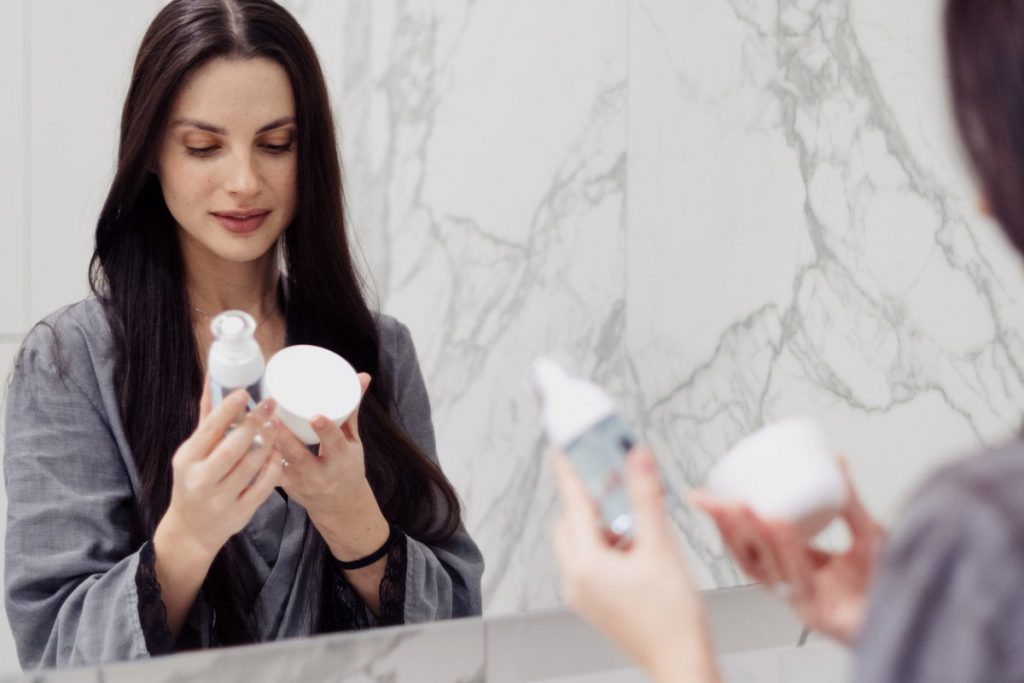
The Different Types of Exfoliants and Which One Should You Use
Did you know that your dead skin cells slough off every 28 days? Did you also know that as you age, the process takes longer? You might not be able to see the dead cells because they are microscopic, but they are responsible for most of your skin problems. This is why exfoliation is important for everyone of all ages. By clearing dead cells, exfoliants help reduce the appearance of large pores, boost skin glow, clear dark spots, and smoothes rough patches.
However, to get the most benefits, you must use the right type of exfoliant for your complexion; otherwise, you risk compromising your skin badly. Easier to say than done as the quest to find the perfect exfoliant match can get quite tricky with so many different options out there. If you have ever gone shopping for exfoliants, the series of products might have overwhelmed you and left you confused — I feel ya’ll. Rest assured, in this article, you will learn about the different types of exfoliants so you can easily decide which one works best for you.
Physical exfoliants
Physical exfoliants (or mechanical exfoliants) are the conventional types of exfoliants and the harshest ones. They’re basically anything that you can use to manually slough off dead cells from the skin’s surface.
Sugar, salt, coffee grounds, or other kinds of crystalline granules are often used as physical exfoliants in skincare. Besides, apart from lotions with abrasive granules, physical exfoliants also include face scrubs, rough washcloths, and cleansing brushes.
People with sensitive, acne-prone or reactive skin should steer away from physical exfoliants as they are more likely to cause inflammation and damage skin. On the flip side, physical exfoliants are ideal for normal, thick, or oily skin. It’s also advisable to use physical exfoliants on body parts with thick skin like the arms and legs rather than the face.
Because they are very coarse, you shouldn’t use them more than twice a week to avoid destroying the uppermost layer of your skin. Always apply physical exfoliants gently and in a circular motion, wash off with lukewarm water, and dry off with a soft towel.
Chemical exfoliants
Chemical exfoliants are acids of varying concentrations used to get rid of dead cells either on the skin’s surface or in deeper layers. This type of exfoliation is not as gritty or abrasive as physical exfoliants; hence, it’s suitable for all skin types. There are three different types of chemical exfoliants, namely alpha hydroxy acids (AHAs), beta hydroxy acids (BHAs), and polyhydroxy acids (PHAs).
Alpha-hydroxy acids
Alpha-hydroxy acids are water-soluble exfoliants made with fruits and high sugar content. AHAs are usually ideal for everyone, but you must stick to a maximum concentration of 10 and 15% to avoid sensitivities.
Common AHAs used in skincare include glycolic acid (found in sugar cane), malic acid (found in apples), lactic acid (found in sour milk and tomato juice), tartaric acid (found in grapes), and citric acid (found in citrus fruit). Of all, glycolic and lactic acids are the most popular, with the latter being more gentle, hence more suitable for sensitive skin. Due to the small molecular size, glycolic acid works in the deeper skin layers while lactic acts more on the surface since it has bigger molecules, making it milder.
AHAs are also humectants, meaning they attract water molecules into the skin, increasing hydration. AHAs are best for softening aging lines, dullness, lack of firmness, and radiance.
Beta-hydroxy acids
Beta hydroxy acids are best known for preventing and reducing acne. The most prevalent BHA in skincare is salicylic acid. Unlike AHAs, salicylic acid is oil-soluble. This means it can penetrate the fat layers, reach into pores, and unclog them of junk and bacteria. In general, BHAs are best to balance oily and acne-prone skin, decongest pores, clear skin, regulate excess sebum, and reduce breakouts.
Polyhydroxy acids
Polyhydroxy acids (PHAs) consist of lactobionic acid, galactose, and gluconolactone. They are gentler than AHAs and BHAs, hence are more suitable for sensitive, problematic, and dry skins.
Enzymatic exfoliants
Enzymatic exfoliants are the mildest type of exfoliants. Unlike physical exfoliants that are gritty on the skin, enzyme exfoliants do not contain abrasive compounds but have a smooth consistency. Enzymatic exfoliants, as the name implies, use enzymes to dissolve dead cells by breaking down keratin on the uppermost layer of the skin.
The enzymes in the exfoliants come from natural sources like fruits (think pineapple and papaya), which act by digesting the damaged cells. Due to their mode of action, enzymatic exfoliants work at a much slower pace, but amazing results are still achievable with time. Enzymatic exfoliants are ideal for people with sensitive, mature, and dry skin. If you fall in this category, it’s best to use enzymatic exfoliants rather than physical exfoliants to prevent damage and barrier weakening.
Final thoughts
All the exfoliants discussed above usually yield awesome results by regulating and maintaining cell turnover and giving your skin a radiant and smooth look. However, keep in mind that you shouldn’t exfoliate your skin more often than twice a week.